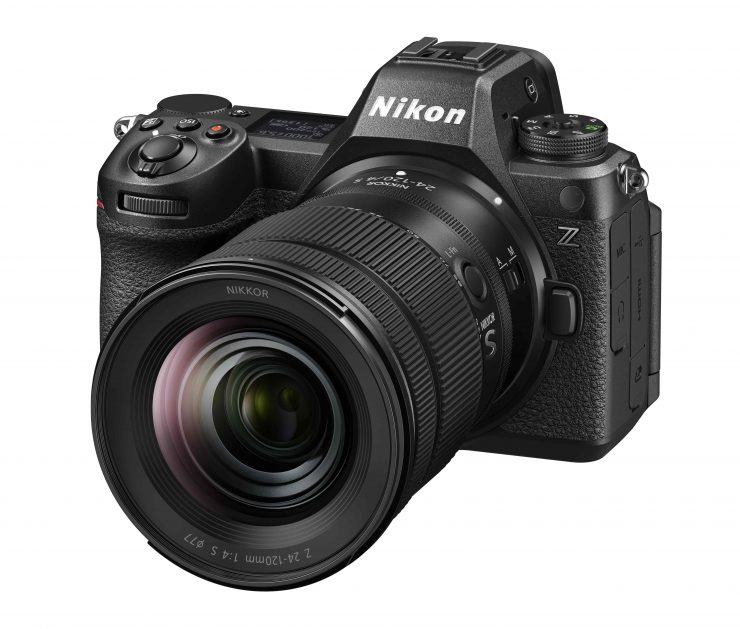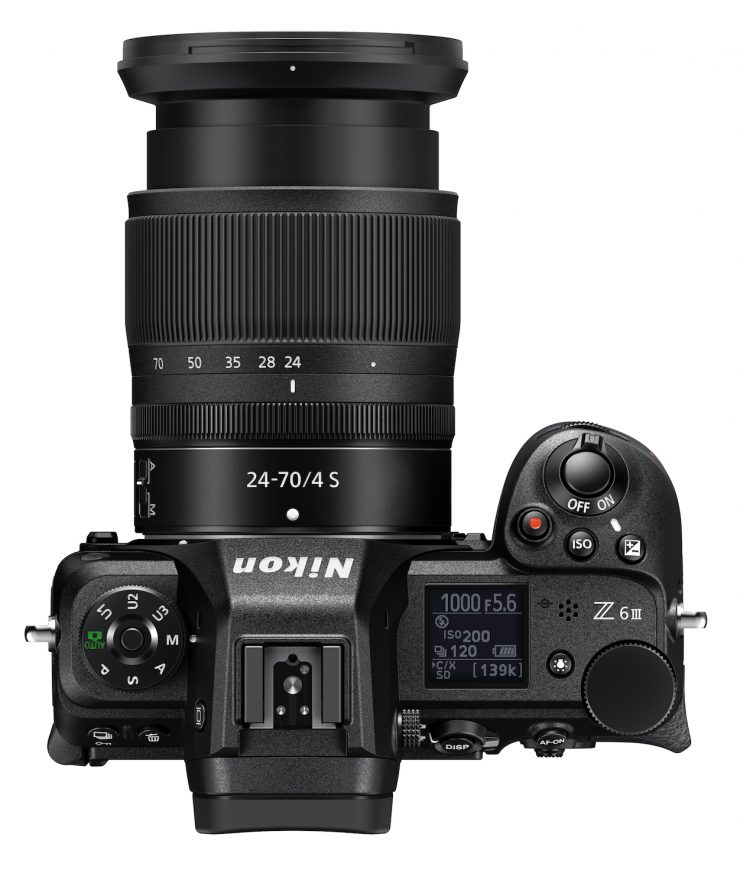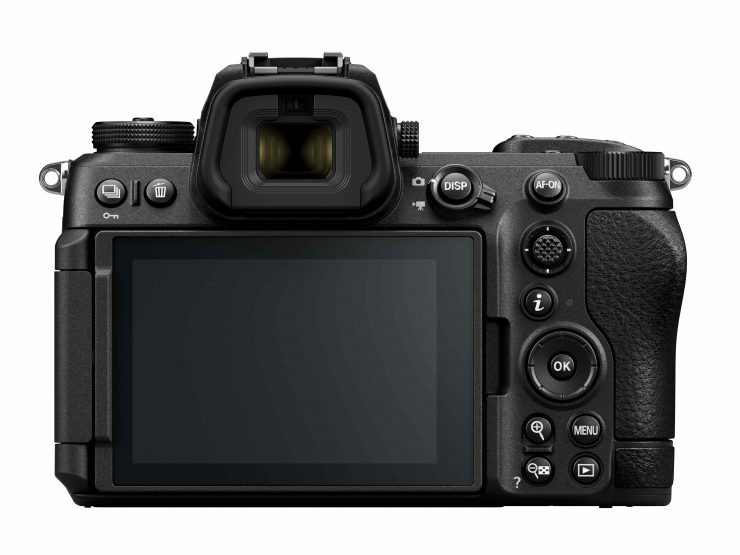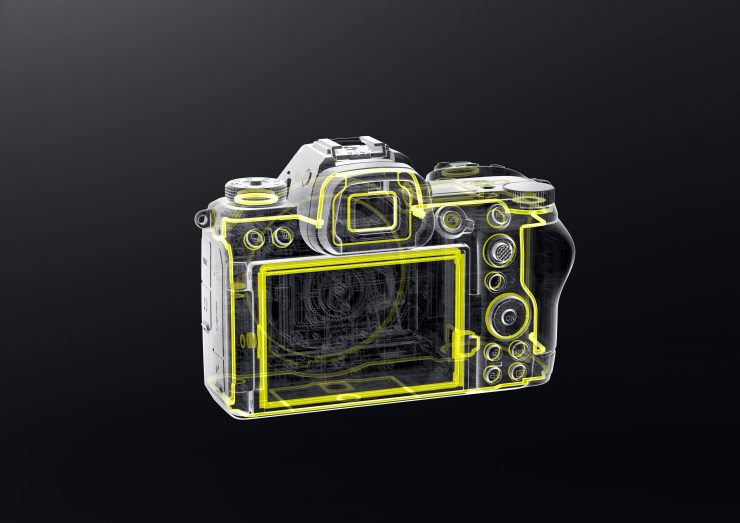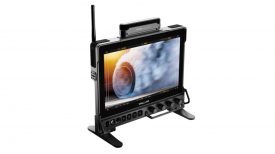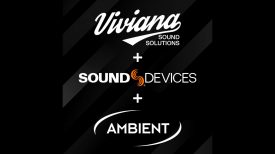Nikon has announced the Z6III, a full-frame mirrorless hybrid with what is claimed to be the World’s first partially-stacked CMOS sensor. The Z6III is also claimed to feature the brightest EVF of any mirrorless camera, and a wide range of features inherited from the Z8 and Z9 flagship cameras.
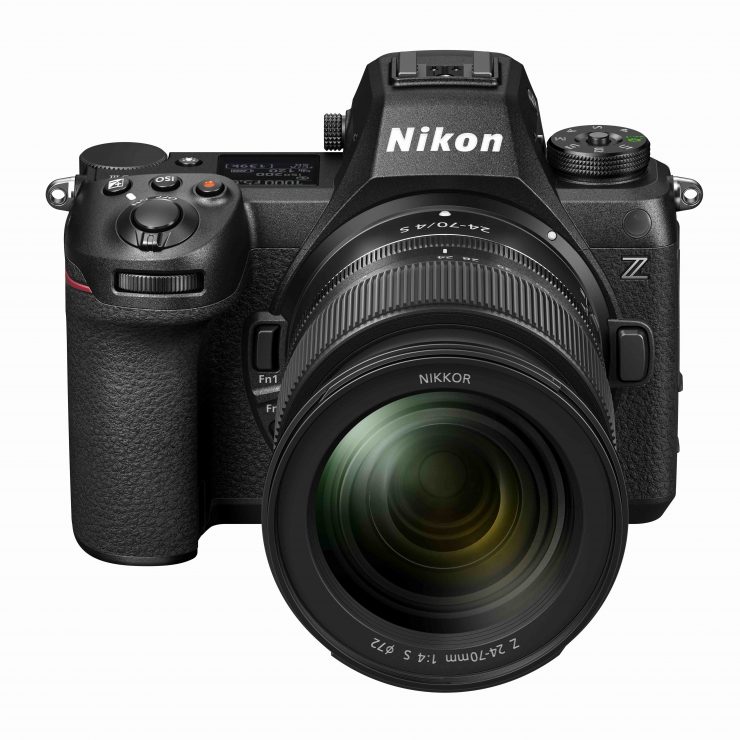
On paper, the Z6III looks to be an impressive mirrorless hybrid with a host of features and capabilities.

“Offering a camera with this level of performance, reliability and an appealing price is a winning formula for all kinds of users who need a camera that will help them excel in every job or creative endeavor. The Z6III represents much more than simply a generational update–it’s a major leap forward that’s going to establish a whole new concept of what a mid-range camera should be capable of.”
Naoki Onozato, President and CEO, Nikon Inc.
Partially-stacked CMOS sensor & EXPEED 7 image processing engine
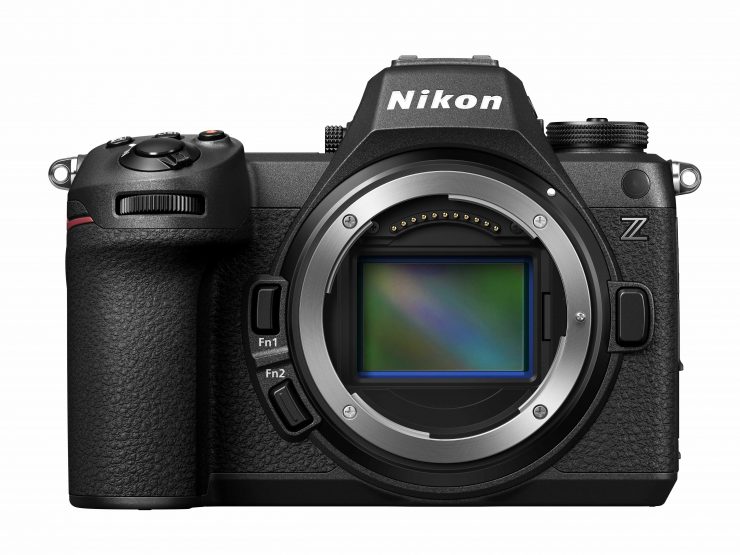
The Z6III is the first mirrorless camera to adopt this new sensor architecture, which features multiple high-speed processing circuits stacked in layers above and below the imaging area of the sensor. The high-speed readout is made possible by this new 24.5MP (35.9 mm x 23.9 mm) sensor in combination with the same EXPEED 7 processing engine that is used in the Z8 and Z9.
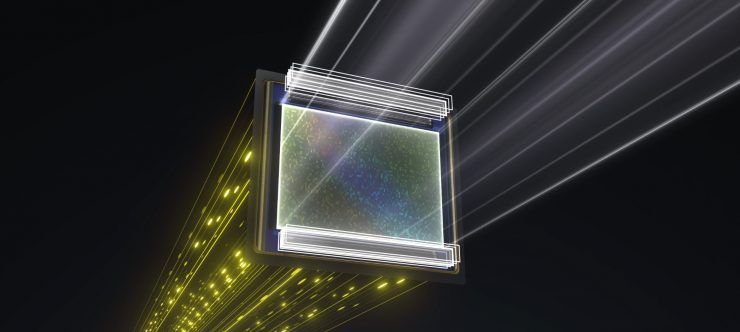
According to Nikon, these ultra-fast readout speeds enable blistering speeds and high frame rates in both photo and video modes.
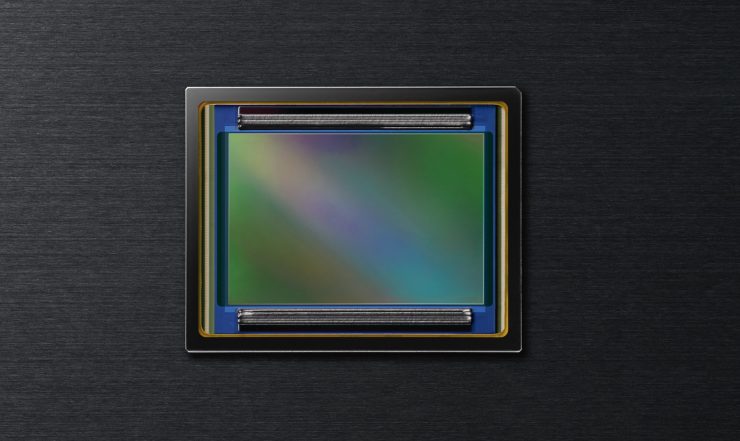
The new sensor design in tandem with the EXPEED 7 image processing engine is claimed to result in an approximately 3.5x increase to readout speed compared to the previous-generation Z6II. This enables the camera to record 6K internal N-RAW and ProRes RAW video, Full HD video up to 240p, and rapid continuous shooting of stills up to 120 fps with Pre-Release Capture.
Video Recording Capabilities
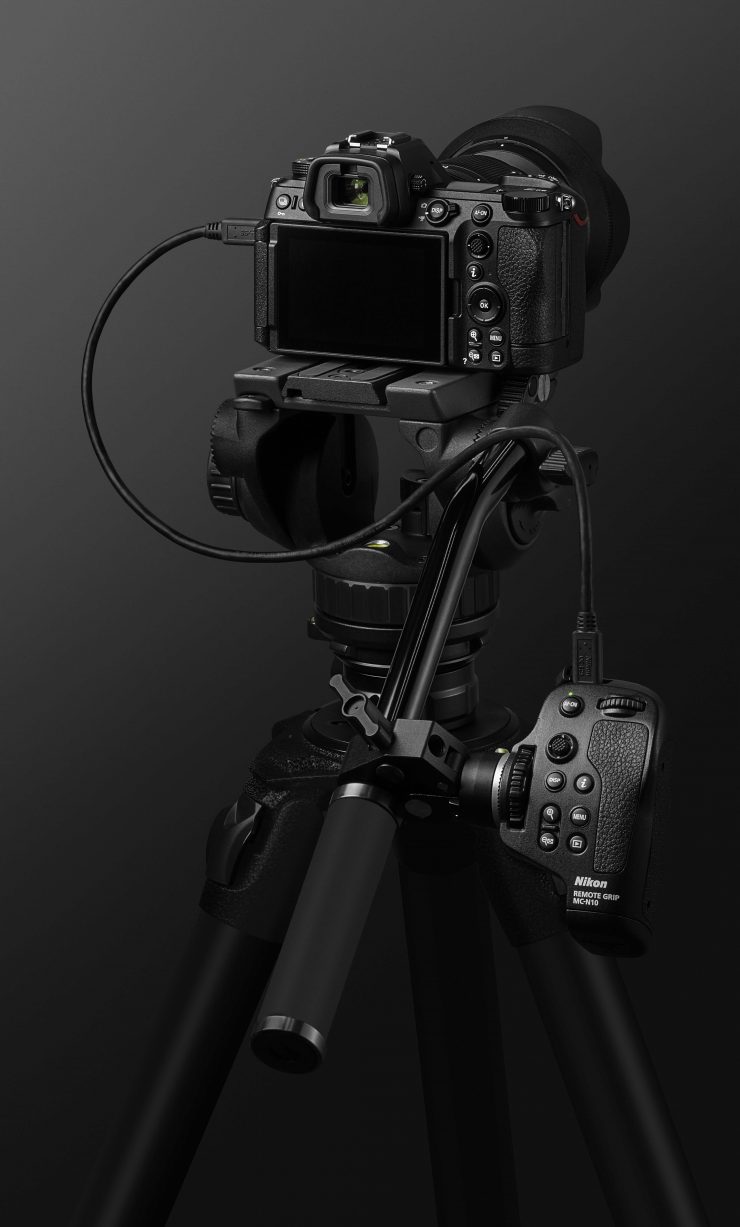
The Z6III is capable of capturing 12-bit 6K/60p N-RAW and 6K/30p ProRes RAW, as well as 10-bit 5.4K ProRes 422 and H.265 video formats. You can capture oversampled 4K UHD/60p video footage from the 6K sensor. 4K UHD/60p, 30p, 25p, 24p recording is only available in the [FX] image area setting.
The camera can capture video in:
- N-RAW (12 bit)
- Apple ProRes RAW HQ (12 bit)
- Apple ProRes 422 HQ (10 bit)
- H.265/HEVC (8 bit/10 bit)
- H.264/AVC (8 bit)
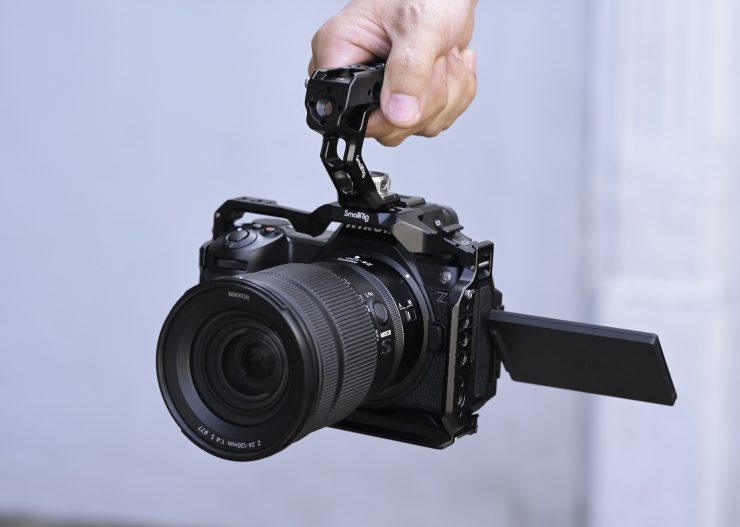
The Z6III can also capture slow-motion footage up to 10× with 10-bit Full HD/240p H.265 video recording.
Recording Resolutions & Frame rates
- 5376 x 3024 (5.4K): 60p/50p/30p/25p/24p
- 3840 x 2160 (4K UHD): 120p/100p/60p/50p/30p/25p/24p
- 1920 x 1080: 240p/200p/120p/100p/60p/50p/30p/25p/24p
- 1920 x 1080 (slow-motion): 30p x4/25p x4/24p x5
Note: Actual frame rates for 240p, 200p, 120p, 100p, 60p, 50p, 30p, 25p, and 24p are 239.76, 200, 119.88, 100, 59.94, 50, 29.97, 25, and 23.976 fps respectively.
Recording Resolutions & Frame rates – RAW VIDEO
- 6048 x 3402: 60p/50p/30p/25p/24p
- 4032 x 2268: 60p/50p/30p/25p/24p
- 3984 x 2240: 120p/100p/60p/50p/30p/25p/24p
Note: Actual frame rates for 120p, 100p, 60p, 50p, 30p, 25p, and 24p are 119.88, 100, 59.94, 50, 29.97, 25, and 23.976 fps respectively.
Any recording time limitations?
According to Nikon, the Z6III’s efficient heat-dissipating design allows continuous 4K UHD/60p recording for up to 125 min. This claim is based on H.265 video recording to a Nikon MC-CF660G memory card at 23°C with auto temperature cutout set to [High] initiated with a cool camera. An external power supply, such as a portable battery or the MB-N14 power battery pack is required.
Audio
A built-in stereo or external microphone can be used; external audio devices can be used via line input, audio input sensitivity adjustable; attenuator, frequency response, and wind noise reduction functions.
Other video features
| Movie Active D-Lighting | Extra high, High, Normal, Low, and Off |
| Time Code | Yes |
| Movie e-VR | Yes |
| Movie HDMI Output | Yes |
| Movie Focus Peaking | Yes |
| Movie Highlight Display (Zebras) | Yes |
| Time-Lapse Movie | Yes |
| N-Log and HDR (HLG) video | Yes |
| wave-form display | Yes |
| Red REC frame indicator | Yes |
| Video recording display zoom (50%, 100%, and 200%) | Yes |
| Extended shutter speeds (mode M AND S) | Yes |
| Dual-format (proxy-video) recording for RAW video | Yes |
| Extended oversampling available | Yes |
| Option to view video recording info available via i menu | Yes |
| Hi-Res Zoom | Yes |
| AF for Movie | Yes |
| Monitor Size | 8-cm/3.2-in |
| Monitor Resolution | approx. 2100k-dot |
| Monitor Type | Vari-angle TFT touch-sensitive LCD |
| Monitor Angle of View | 170° viewing angle |
| Monitor Adjustments | Color balance15-level manual brightness controls |
| Virtual Horizon Camera Indicator | Yes |
With the high-resolution zoom function, you can zoom in up to 2x in Full HD and 1.4x in 4K UHD with the touch of a button, even when using a prime lens. Unlike regular digital zoom, it uses 6K resolution when shooting in 4K UHD, so high resolution is maintained even when zoomed in. In addition, you can choose from 11 zoom speeds, allowing you to achieve the zoom effect you desire.
Available for 4K 24-60p (ProRes 422 HQ, H.265 10/8bit) and Full HD 24-60p (ProRes 422 HQ, H.265 10/8bit, H.264) in full size/FX format. [AF-area mode] is fixed to [Wide-area AF (L)] and focus points are not displayed.
Time-lapse videos generated in-camera
You can create 4K UHD time-lapse videos in-camera. It also supports interval timer shooting for those who want to create high-quality time-lapse videos using RAW files. Both cameras are equipped with an exposure smoothing function that reduces subtle variations in exposure between frames, allowing you to create beautiful time-lapse videos. To create a time lapse movie using images taken with interval timer shooting, you will need to use editing software from another company.
120 fps with Pre-Release Capture
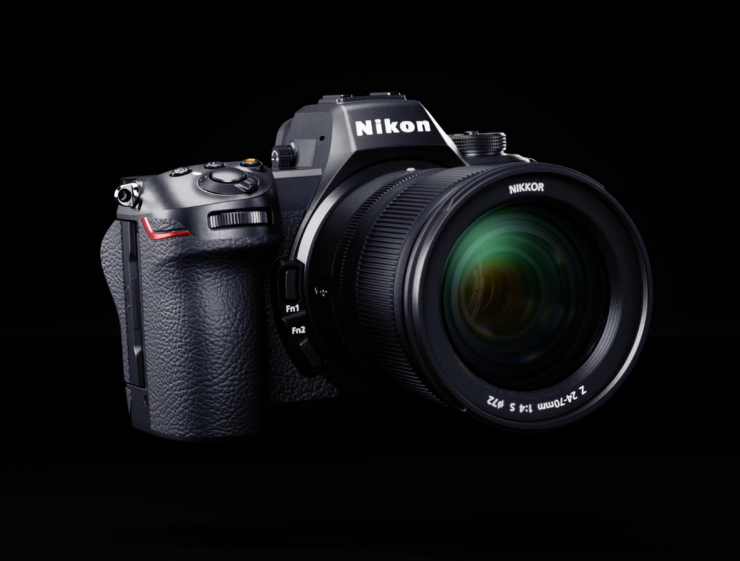
This feature enables photographers to capture shots that might have otherwise been missed, such as the moment a bird takes flight, a lightning strike or the game-winning goal. A half-press of the shutter-release button starts buffering images, and when the shutter is pressed all the way, the Z6III saves images taken up to one second prior. This can only be done when shooting JPEGS and not RAW images.
Still Capture
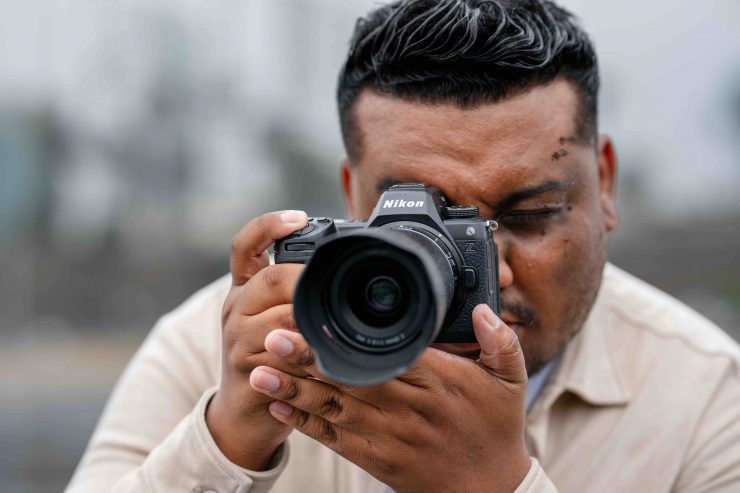
Image Area (L) FX
- (L) 6048 x 4032 (large)
- (M) 4528 x 3024 (medium)
- (S) 3024 x 2016 (small)
Image Area (L) DX
- (L) 3984 x 2656 (large)
- (M) 2976 x 1992 (medium)
- (S) 1984 x 1328 (small)
Image Area (L) 1:1 (24 x 24)
- (L) 4032 x 4032 (large)
- (M) 3024 x 3024 (medium)
- (S) 2016 x 2016 (small)
Image Area (L) 16:9 (36 x 20)
- (L) 6048 x 3400 (large)
- (M) 4528 x 2544 (medium)
- (S) 3024 x 1696 (small)
NEF (RAW): 14 bit with lossless, high-efficiency, and high efficiency options
JPEG: JPEG-Baseline compliant with fine (approx. 1:4), normal (approx. 1:8), or basic (approx. 1:16) compression; size-priority and optimal-quality compression available
HEIF: Supports fine (approx. 1 : 4), normal (approx. 1 : 8), or basic (approx. 1 : 16) compression; size-priority and optimal-quality compression available
NEF (RAW)+JPEG: Single photograph recorded in both NEF (RAW) and JPEG formats
NEF (RAW)+HEIF: Single photograph recorded in both NEF (RAW) and HEIF formats.
Picture Control Options
- Auto
- Standard
- Neutral
- Vivid
- Monochrome
- Flat Monochrome
- Deep Tone Monochrome
- Portrait
- Rich Tone Portrait
- Landscape
- Flat
Creative Picture Controls: (Dream, Morning, Pop, Sunday, Somber, Dramatic, Silence, Bleached, Melancholic, Pure, Denim, Toy, Sepia, Blue, Red, Pink, Charcoal, Graphite, Binary, Carbon)
The Picture Controls can be modified.
Fast AF
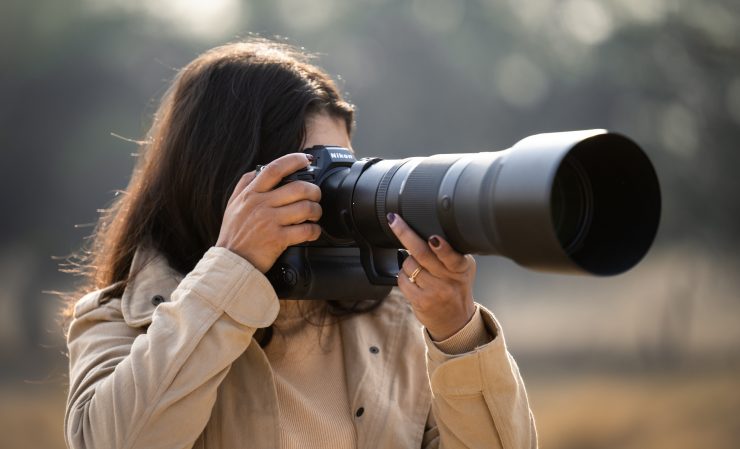
The Z6III also features the same fast AF system inherited from the Z8 and Z9, which includes advanced multi-subject detection. The AF is claimed to be fast and accurate, clocking in at a full 20% faster than the Z6II. In challenging light, the AF detection range has been extended to −10 EV2, superior even to the flagship level cameras. This enhanced sensitivity makes it easier to focus in dark situations like nighttime sports or an event reception.
The Z6III draws on the advanced subject-detection technology of the Z8 and Z9 to automatically detect nine subject types, including people, animals and various vehicles. Users can lock onto these subjects with advanced AF modes including 3D-tracking, Auto-area AF, Wide-area AF and Dynamic-area AF. Custom wide-area AF patterns allows for the detection and tracking of subjects within a custom designated area.
Build Quality
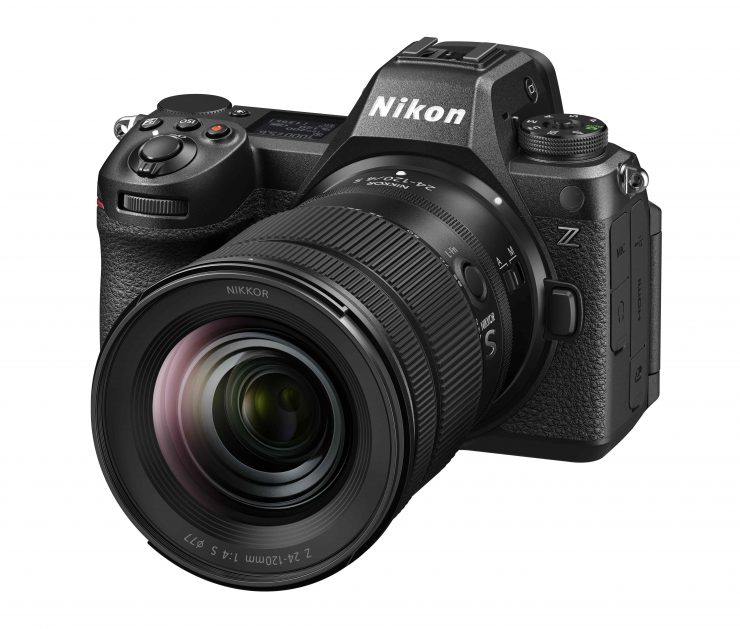
The Z6III is constructed from magnesium alloy and Sereebo material for maximum durability and light weight. The camera weighs only 1.67 lbs / 757g with a battery and memory card.
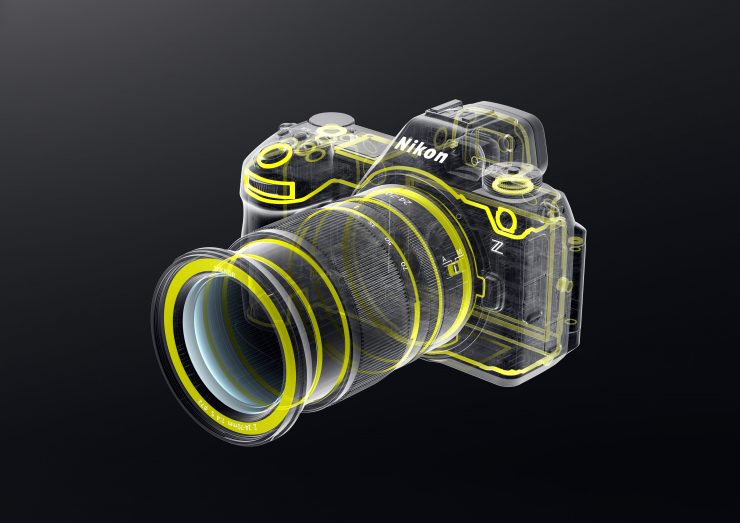
The Z6III is sealed against dust and moisture to the same level as the Z8, and is rated for operation down to 14°F/−10°C, making it suitable for use in a wide variety of environments and conditions.
Bright EVF & Vari-angle LCD screen
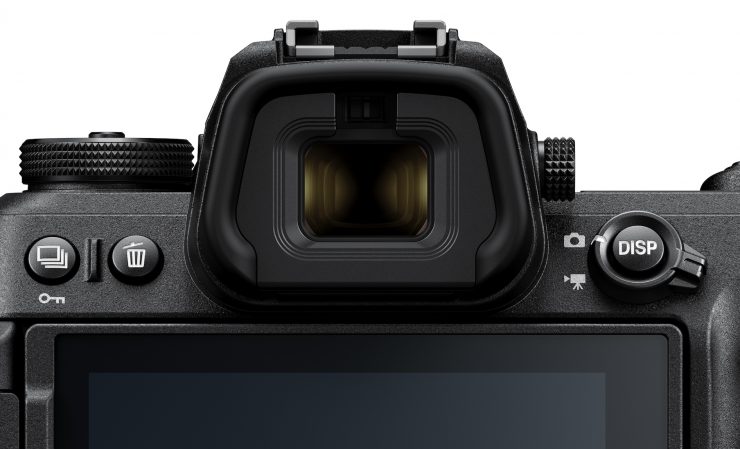
At up to 4,000 cd/m2 (nits), the Z6III’s 5,760k-dot electronic viewfinder is being claimed as the brightest ever in a mirrorless camera. It is said to deliver a clear, detailed view even in extremely bright outdoor situations while minimizing viewfinder blackout.
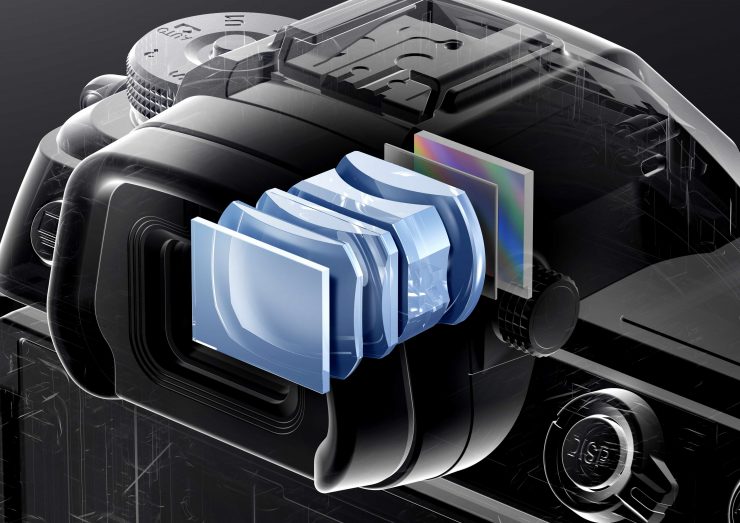
What is interesting, is that in addition to its class-leading brightness and high resolution, the Z6III’s EVF is the first in a mirrorless camera to support a DCI-P3 equivalent color gamut.
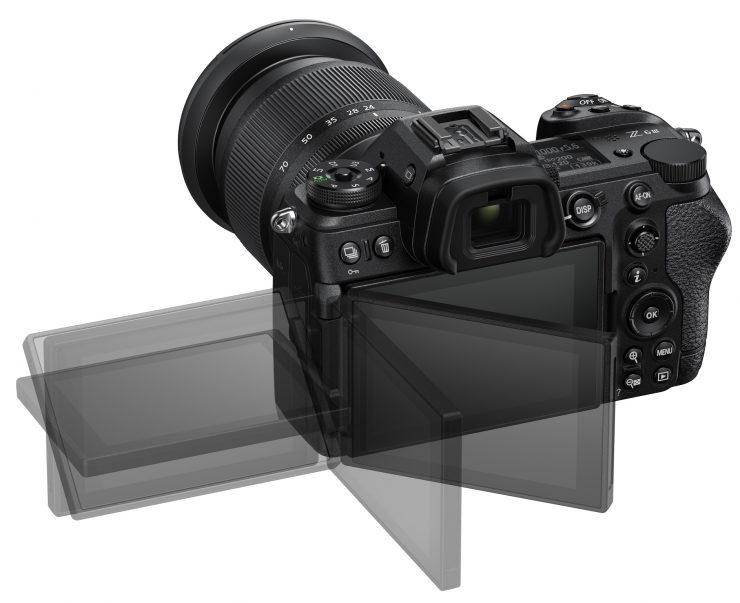
The 3.2” rear LCD touchscreen can be used as a front-facing screen for video production and self-recording, as well as framing at a low angle.
Recording Media
The Z6III has two slots. One is a CFexpress/XQD and the other is SD.
CFexpress (Type B), XQD, SD (Secure Digital), and UHS‑II compliant SDHC and SDXC memory cards can be used.
Inputs & Outputs
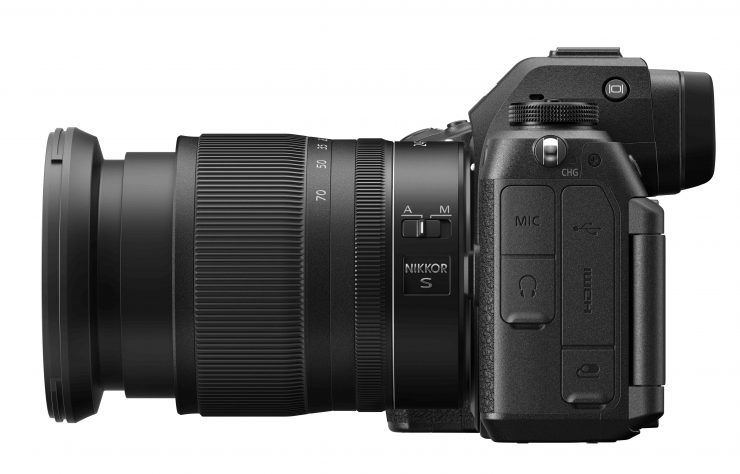
The Z6III has the following inputs and outputs:
- USB: Type C SuperSpeed USB connector
- HDMI: Type A HDMI connector
- Audio Input: Stereo mini-pin jack (3.5 mm diameter; plug-in power and line input supported)
- Audio Output: Stereo mini-pin jack (3.5 mm diameter)
- Accessory terminal: Built-in
ISO Performance
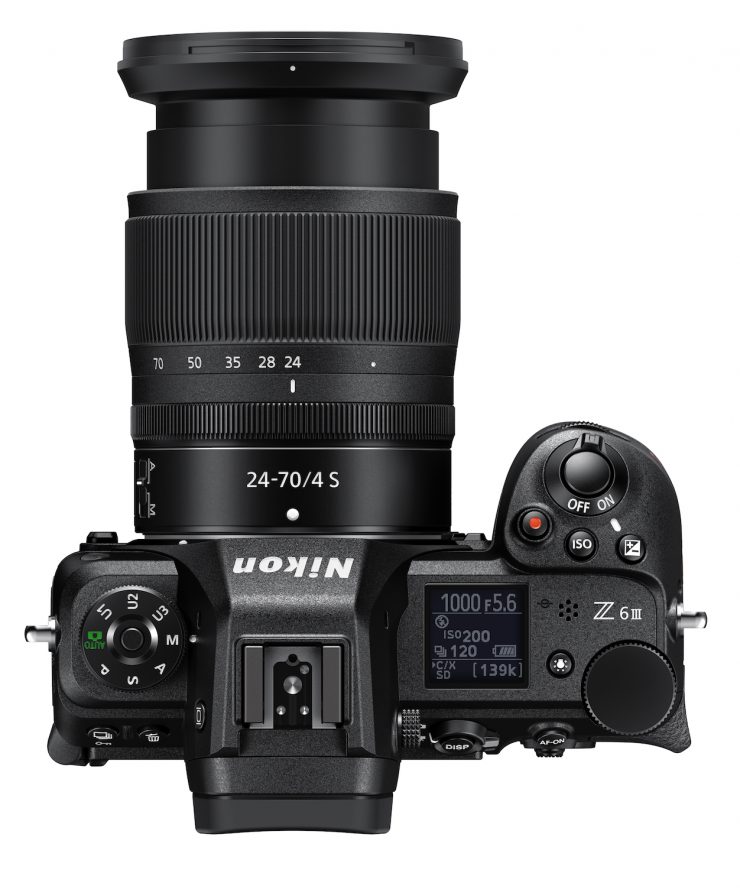
The Z6III’s wide native ISO range is from 100-64,000 (51,200 in video) and is expandable to 204,800 for ultra-low-light shooting. The Z6III’s EXPEED 7 image processing engine is claimed to tailor noise reduction, effectively minimizing grainy noise in flat areas of the image while preserving fine details in subjects such as buildings. This is claimed to result in sharper, clearer images in low-light environments. I personally found the noise reduction to be to aggressive on the Z9, so it will be interesting to see what it looks like on the Z6III.
ISO when shooting video
Mode M: Manual selection (ISO 100 to 51200; choose from step sizes of ¹⁄₆, ¹⁄₃ and 1 EV); with additional options available equivalent to approximately 0.3, 0.7, 1, or 2 EV (ISO 204800 equivalent) above ISO 51200; auto ISO sensitivity control (ISO 100 to Hi 2.0) available with selectable upper limit
Note: ISO sensitivity is limited to 400 to 51200 when HLG is selected for tone mode.
Note: ISO sensitivity is limited to Lo 0.3 to 2.0 and 800 to 51200 when N-Log is selected for tone mode.
Modes P, S, A: Auto ISO sensitivity control (ISO 100 to Hi 2.0) with selectable upper limit
AUTO mode: Auto ISO sensitivity control (ISO 100 to 51200)
8.0 stop Vibration Reduction
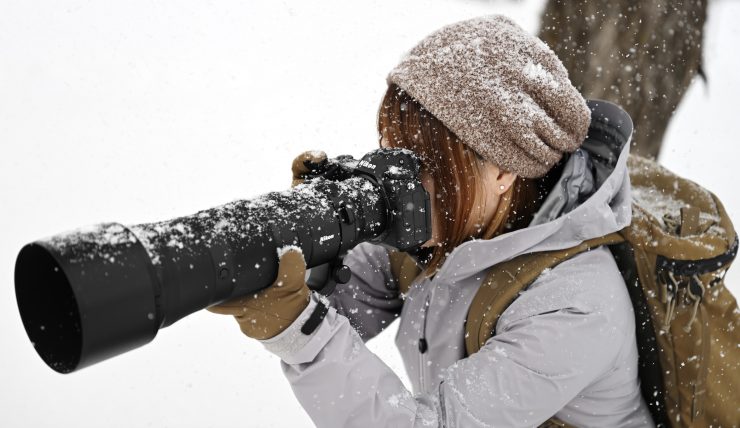
The built-in 5-axis image stabilization delivers up to 8.0 stops of Vibration Reduction, This allows you to run slower shutter speeds, while keeping subjects sharp and using lower ISOs.
Additionally, the Z6III features Focus Point VR, which prioritizes stabilization on the active focus point. This only works in photo mode with NIKKOR Z lenses that are not equipped with VR. It does not function when multiple focus points are displayed.
High-resolution Pixel Shift mode
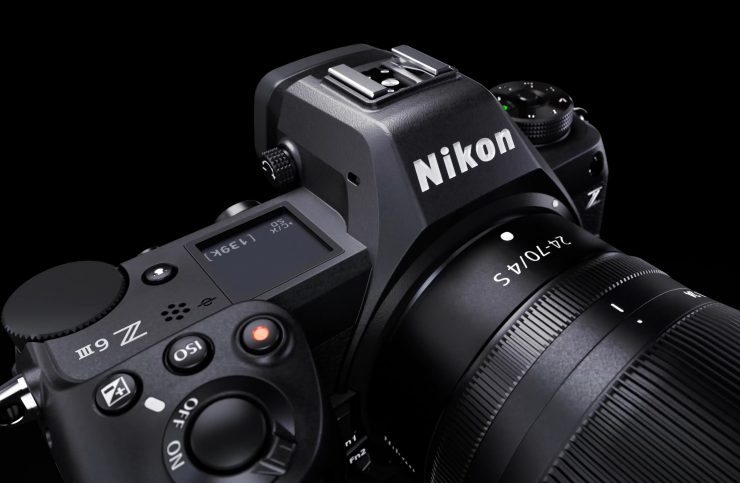
In Pixel-shift mode, the Z6III’s sensor is subtly shifted across 4, 8, 16, or 32 exposures, for increased color and detail with an incredibly high resolution of up to approx. 96MP. Both the subject and the camera must be still and RAW images shot with the pixel shift shooting feature must be combined using NX Studio
Flexible Color Picture Control
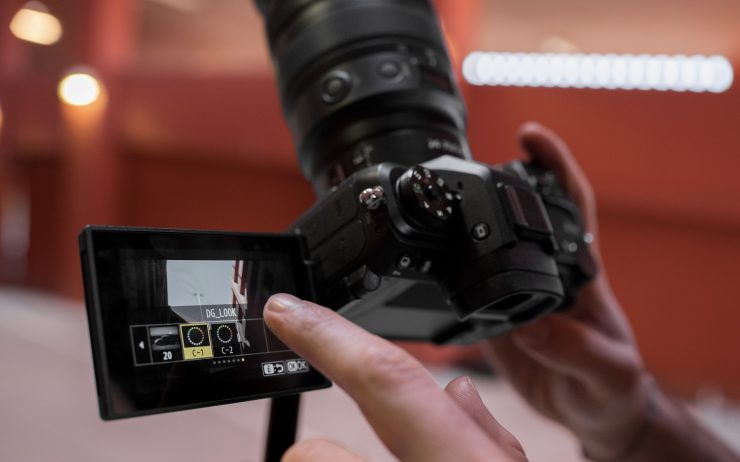
The Z6III supports the new Flexible Color Picture Control feature in NX Studio. Z6III owners can use the software’s powerful Color Blender and Color Grading features to create custom presets that can be uploaded to the camera as Custom Picture Controls.
New Nikon Imaging Cloud
The new Nikon Imaging Cloud will be a new complimentary cloud service that expands connectivity and creative options for Z6III owners. Users will be able to browse a suite of curated Imaging Recipes courtesy of Nikon and selected creators, including suggested camera settings and insights plus Cloud Picture Control presets that Z6III owners can download straight to their camera.
When the Z6III is connected to Nikon Imaging Cloud via Wi-Fi, still images captured with the camera can be automatically uploaded to a range of popular cloud storage services including NIKON IMAGE SPACE, making the storage and sharing of images even more convenient. In addition, Z6III owners will be able to use Nikon Imaging Cloud to keep their camera’s firmware up to date automatically over Wi-Fi, avoiding the need to manually download and install via a memory card. More information is available on the Nikon Imaging Cloud page: imagingcloud.nikon.com.
New MB-N14 Power Battery Pack
The MB-N14 (release scheduled for Summer 2024) is an optional power battery pack with an integrated shutter button for the Z6III, Z7II and Z6II. The MB-N14 can hold two EN-EL15c rechargeable Li-ion batteries, allowing users to record approximately 1.9× more stills and extend video shoots.
In addition to offering the same dust and drip resistance as the Z6III, the MB-N14 can also be used in conditions as cold as −10°C/14°F, making it extremely useful when shooting for extended periods of time in harsh conditions. What’s more, the MB-N14 is a “hot swap” power battery pack that continues to supply power even when one of the two batteries is removed. A built-in USB connector enables batteries inserted in the MB-N14 to be charged even when the MB-N14 is not attached to the camera.
According to Nikon, when shooting video, here are the expected battery run times:
• [Viewfinder only] selected for monitor mode: Approx. 100 minutes
• [Monitor only] selected for monitor mode: Approx. 100 minutes
Price & Availability
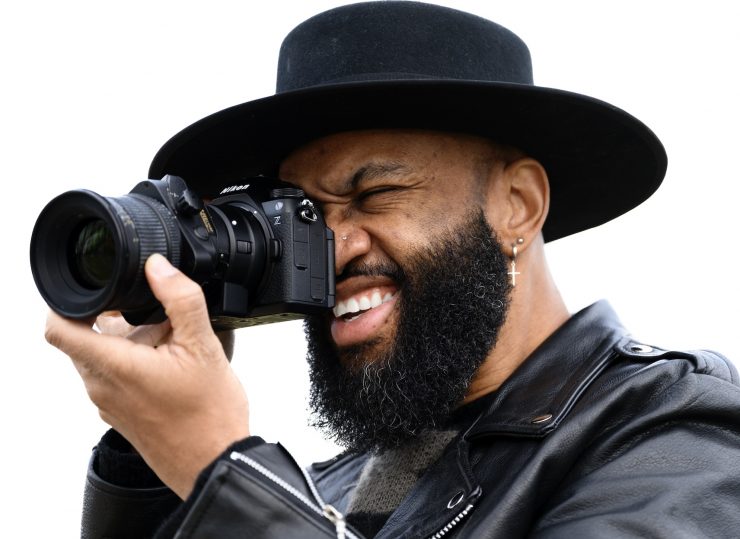
The new Nikon Z6III will be available in late June for $2,496.95 USD in the body-only configuration, or with the NIKKOR Z 24-70mm f/4 lens for $3,099.95 USD.
The MB-N14 power battery pack will be available this summer for a $359.95 USD.
Competition
Below are some other full frame mirrorless hybrids that could be considered competition.
| PRICE | |
| Nikon Z6III | $2,496.95 USD |
| Panasonic Lumix S9 | $1,497.99 USD |
| Sony a7 IV | $2,498 USD |
| Panasonic Lumix S5 IIX | $1,997.99 USD |
| Panasonic Lumix S5 II | $1,797.99 USD |
| Sony a7R IIIA | $2,198 USD |
| Sony a7C | $1,598 USD |
| Sigma fp L | $2,499 USD |
| Panasonic Lumix S1H | $3,595 USD |
| Canon EOS R6 Mark II | $1,999 USD |
| Canon EOS R5 | $2,899 USD |
| Nikon Z8 | $3,496.95 USD |


